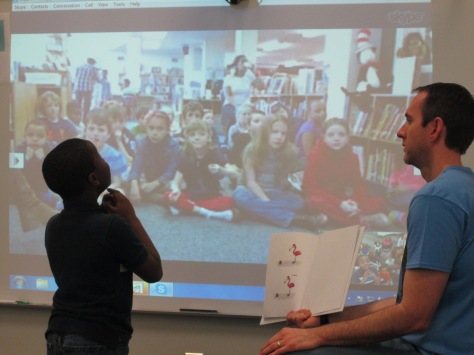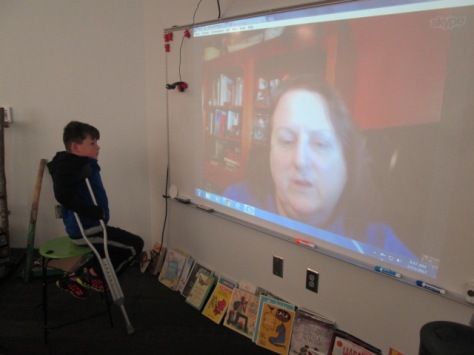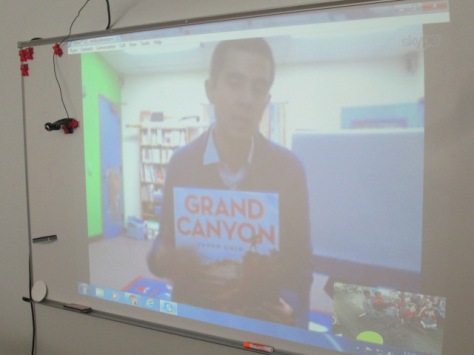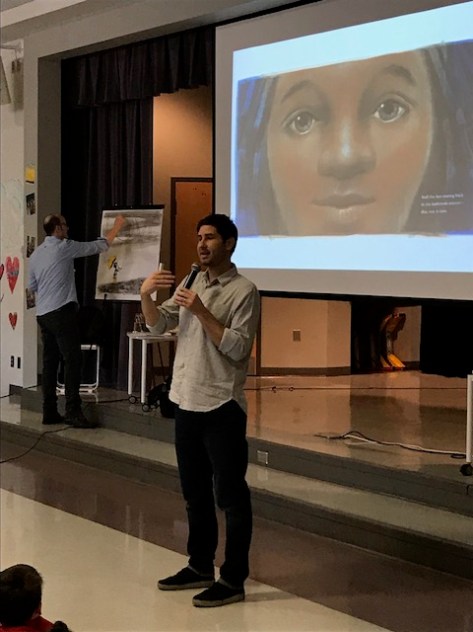
Each year we look forward to connecting with authors and classrooms around the US for Litworld’s World Read Aloud Day.
LitWorld founded World Read Aloud Day in 2010 as an opportunity for people all around the globe to celebrate the joy of reading aloud, and advocate for literacy as a fundamental human right that belongs to everyone. Over the last ten years, World Read Aloud Day has evolved into a global movement of millions of readers, writers, and listeners from communities all across the world coming together to honor the joy and power of reading and sharing stories, and continue expanding the definition and scope of global literacy. ~Litworld World Read Aloud Day
Back in November, I began using a collaborative Google document to find classrooms, libraries, and authors for us to connect with. In each connection, we chose a book to read aloud together. Sometimes we would have a specific kind of discussion planned for our students after the book and other times we just let students ask one another questions to make a connection to another group of learners.

This year, we made connections with classes in Georgia, Vermont, Maine, Kansas, Michigan, New Jersey, Connecticut, Massachusetts, and Virginia, We also connected with authors Laura Murray, Jess Redman, and Liz Garton Scanlon.
We shared several books with our connecting classes. One favorite was the book Truman by Jean Reidy & Lucy Ruth Cummins. This book tales the story of a brave and small tortoise named Truman who sets out on an adventure in his apartment while he awaits the return of his Sarah. When we connected with Donna MacDonald and her students in Vermont, we got to meet their pet tortoise, Milo.

We shared the book Just Ask by Sonia Sotomayor with a few connecting classes too. This book is filled with students who learn in many different ways and each page ends with a question. Students in each connecting class shared answers to questions such as “what frustrates you?” and “how will you use your powers in the world?”.
Another thing I love about connections is being introduced to new books. Two books that were new to us this time were the hilarious Grownups Never Do That by Benjamin Chaude and Davide Cali & Seagull and Sea Dragon by Sydni Gregg. Both of these made great read alouds for a connection. Seagull and Sea Dragon had two voices so each librarian could choose a character to read. Grownups Never Do That riled up students and made them want to share all the things they had seen grownups do that children are told not to do.
Our author connections were fantastic this year. Laura Murray involved the students in reading Gingerbread Man Loose in the School and shared how the book came to be. Jess Redman told us about her upcoming book Quintessence and read a chapter from The Miraculous. Liz Garton Scanlon showed us several of her books and did an interactive reading of Bob, Not Bob. One of the most special things about connecting with authors is that they answer student questions. We get to learn about where they get their ideas, how long it takes them to write their books, what the revising process is like, and more. Since they are in their homes, they also can reach over and grab artifacts to go along with their answers. For example, a student asked Jess Redman what her favorite books were as a kid and she was able to reach over and get the actual copies of the books from her childhood.
As we met new friends via Skype, we always looked at map to see where they were in relation to us. Many of our northeastern friends were experiencing snow, so we got to hear about how they go to school in the snow. Our Kansas friends were very close to Missouri, so we got to learn about the Super Bowl excitement and how school might be canceled for a parade. We got to share a tornado warning with a connecting class during our week of crazy Georgia weather.

World Read Aloud always brings great connections to people in the world, shared stories across the miles, and interesting conversation between learners. We look forward to next year.
















































































































































































